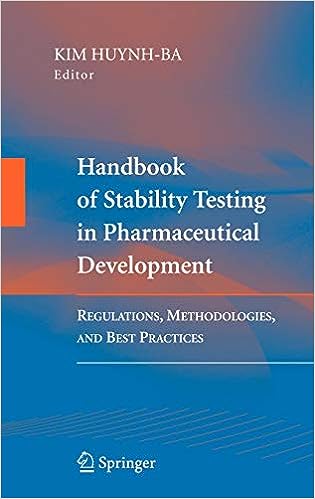Challenges and Solutions in ASEAN Stability Testing for Generic Pharmaceuticals
Introduction
Stability testing is a critical component of pharmaceutical development, ensuring that generic drugs meet the required quality, safety, and efficacy standards over their shelf life. The ASEAN Stability Guidelines provide a harmonized framework for evaluating the stability of pharmaceuticals in Southeast Asia, focusing on the region’s tropical climate (Climatic Zone IVb). However, implementing these guidelines for generic pharmaceuticals presents unique challenges. This article explores common hurdles and practical solutions for ASEAN stability testing, helping manufacturers achieve compliance and maintain product quality.
Understanding ASEAN Stability
The ASEAN guidelines align with global standards such as ICH Q1A(R2) but are tailored to the tropical conditions of Southeast Asia. Key requirements include:
- Long-Term Testing: Conducted at 30°C ± 2°C / 75% RH ± 5% RH for at least 12 months.
- Accelerated Testing: Performed at 40°C ± 2°C / 75% RH ± 5% RH for six months to predict shelf life.
- Critical Quality Attributes (CQAs): Monitoring physical, chemical, and microbiological stability parameters.
Tip: Review ASEAN guidelines thoroughly to understand region-specific requirements.
Challenges in ASEAN Stability Testing for Generics
1. Climatic Conditions
The high temperature and humidity in ASEAN regions accelerate degradation, making stability testing more complex:
- Increased risk of moisture-induced degradation for hygroscopic products.
- Higher likelihood of chemical instability under elevated temperatures.
Solution: Incorporate robust formulations and moisture-resistant packaging to address climatic challenges.
2. Regulatory Variations
While ASEAN guidelines provide a harmonized framework, member countries may have slight variations in implementation:
- Additional requirements for specific dosage forms or therapeutic categories.
- Differences in data submission formats and review processes.
Solution: Collaborate with local regulatory consultants to navigate country-specific requirements effectively.
3. Resource Limitations
Small and medium-sized manufacturers often face constraints in conducting stability studies:
- Limited access to advanced stability chambers for tropical conditions.
- High costs associated with extended stability studies.
Solution: Partner with contract research organizations (CROs) to leverage their expertise and infrastructure.
4. Packaging Challenges
Generic drugs often use cost-effective packaging materials, which may not provide adequate protection in tropical climates:
- Susceptibility to moisture ingress and light exposure.
- Compatibility issues with drug formulations.
Solution: Invest in packaging studies to evaluate and optimize container-closure systems for tropical environments.
Solutions and Best Practices for ASEAN Stability Testing
1. Design a Robust Stability Program
Develop a comprehensive stability testing program that addresses ASEAN-specific requirements. Key steps include:
- Defining storage conditions for long-term and accelerated studies.
- Monitoring CQAs such as assay, impurities, and dissolution profiles.
- Including real-time data to support shelf-life claims.
Tip: Use ICH guidelines as a foundation and adapt protocols to ASEAN conditions.
2. Optimize Formulations
Ensure formulations are robust enough to withstand tropical conditions:
- Incorporate stabilizers to reduce chemical degradation.
- Use desiccants for moisture-sensitive products.
Example: Reformulating hygroscopic generics with excipients that minimize moisture absorption.
3. Conduct Packaging Studies
Evaluate the interaction between the drug product and its packaging materials under tropical conditions:
- Test for leachables, extractables, and moisture ingress.
- Ensure packaging materials provide light and moisture protection.
Tip: Use opaque and multi-layered materials to enhance packaging durability.
4. Leverage Technology
Use advanced technologies to streamline stability testing processes:
- Automated Chambers: Maintain precise temperature and humidity controls.
- Data Management Systems: Centralize and analyze stability data for faster decision-making.
Tip: Invest in digital solutions to improve data accuracy and compliance.
5. Collaborate with Regulators
Engage proactively with regulatory authorities to address concerns and clarify requirements:
- Submit stability protocols for pre-approval to avoid delays.
- Participate in ASEAN regulatory workshops and forums.
Tip: Build strong relationships with regulators to navigate the approval process smoothly.
Emerging Trends in ASEAN Stability Testing
The stability testing landscape in ASEAN is evolving with advancements in science and technology:
- Predictive Analytics: AI tools forecast stability trends, reducing reliance on extended studies.
- Sustainable Practices: Eco-friendly packaging and energy-efficient stability chambers are gaining traction.
- Global Harmonization: Efforts to align ASEAN guidelines with international standards simplify multi-regional submissions.
Future Outlook: These trends will likely shape the future of stability testing, enhancing efficiency and sustainability.
Impact of ASEAN Guidelines on Generics
ASEAN stability guidelines significantly influence the development and approval of generic pharmaceuticals:
- Improved Product Quality: Rigorous testing ensures generics maintain their integrity in tropical climates.
- Streamlined Approvals: Harmonized guidelines simplify regulatory submissions across ASEAN member states.
- Market Expansion: Clear requirements encourage investment in the ASEAN pharmaceutical sector.
Conclusion
Stability testing for generic pharmaceuticals under ASEAN guidelines presents unique challenges, but these can be effectively addressed with robust formulations, optimized packaging, and strategic collaboration with regulators. By leveraging technology, adopting best practices, and staying informed about emerging trends, manufacturers can ensure compliance, maintain product quality, and capitalize on opportunities in the dynamic ASEAN market. As the regulatory landscape evolves, proactive adaptation will be key to success in delivering high-quality generics to patients in Southeast Asia.

